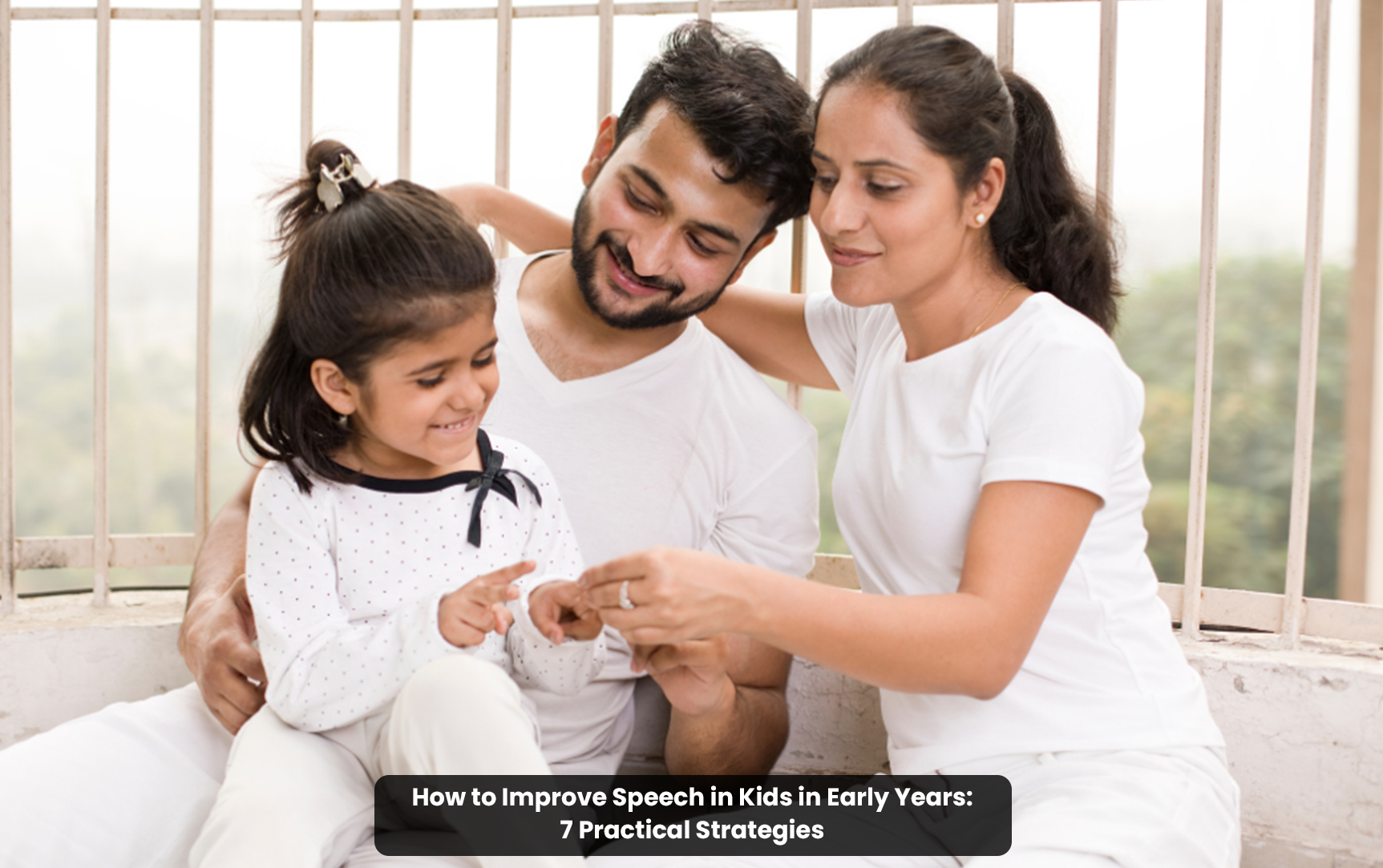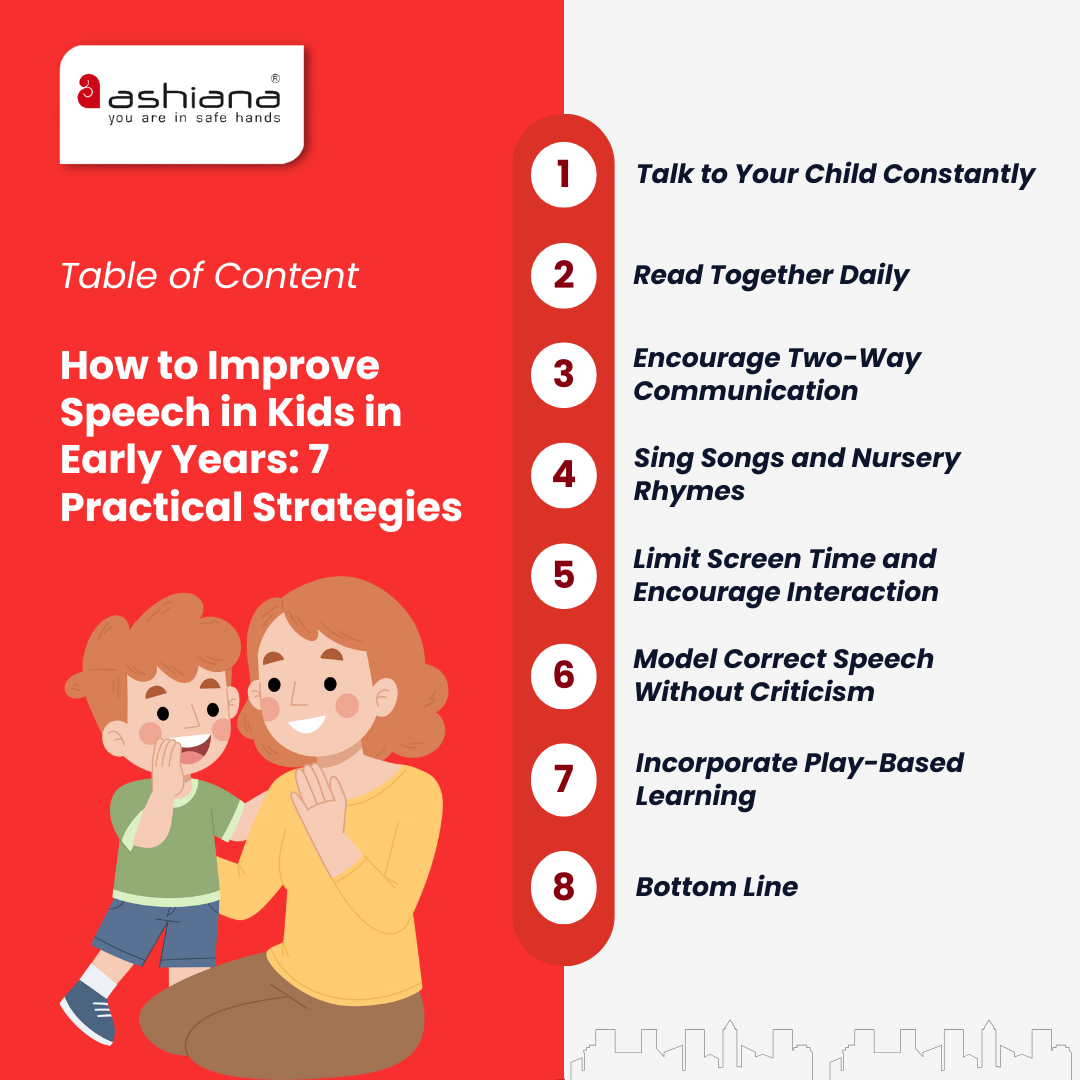
 Here are seven strategies to foster better communication skills in young children.
Here are seven strategies to foster better communication skills in young children.
To build on your child’s speech and language, talk your way through the day. Name foods at the grocery store, explain what you’re doing as you cook a meal or clean a room, and point out objects around the house. Keep things simple, but avoid “baby talk.”
To help a child speak clearly:
Ashiana, Ashiana Housing build homes. Homes surrounded by vast green spaces and fresh breeze. Homes cocooned in secured gated complexes. Homes where futures are forged and there are opportunities to grow. And Homes in environments brimming with healthy activity, trust and respect. At heart, we build communities with care.
Other posts by Ashiana
Join 1000+ of fellow readers. Get expert real estate knowledge straight to your inbox absolutely free. Just enter your email address below.